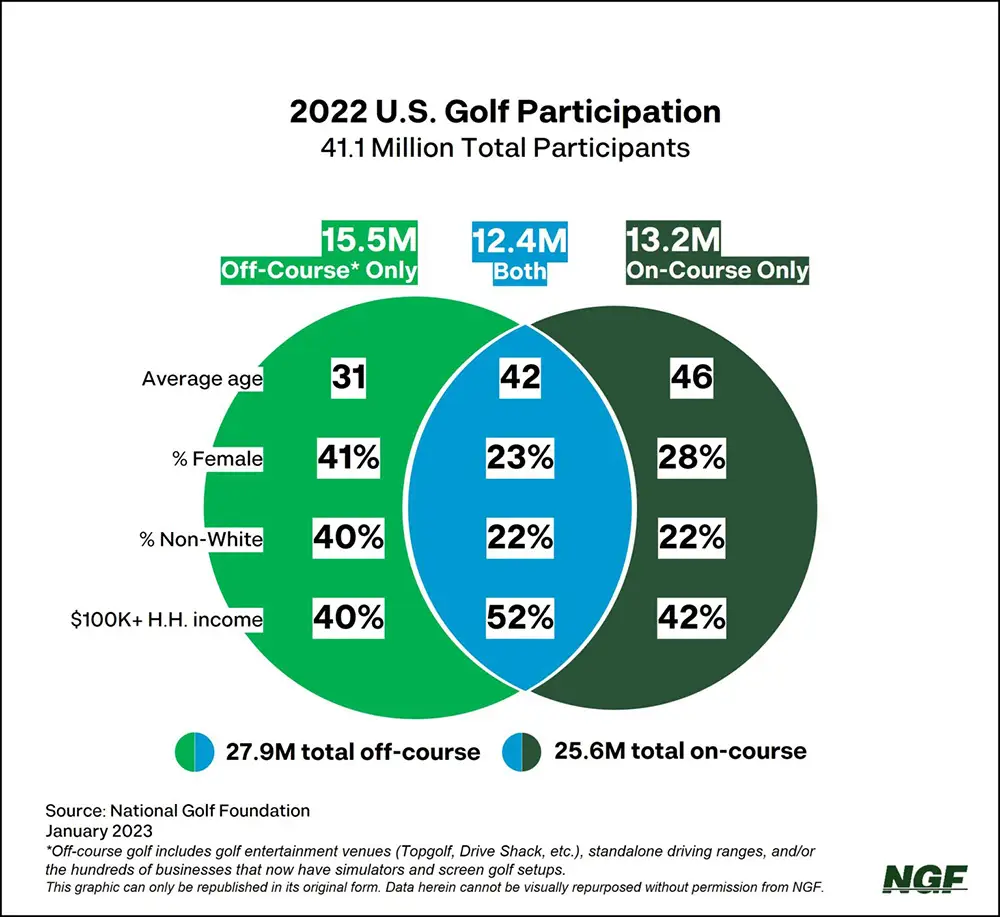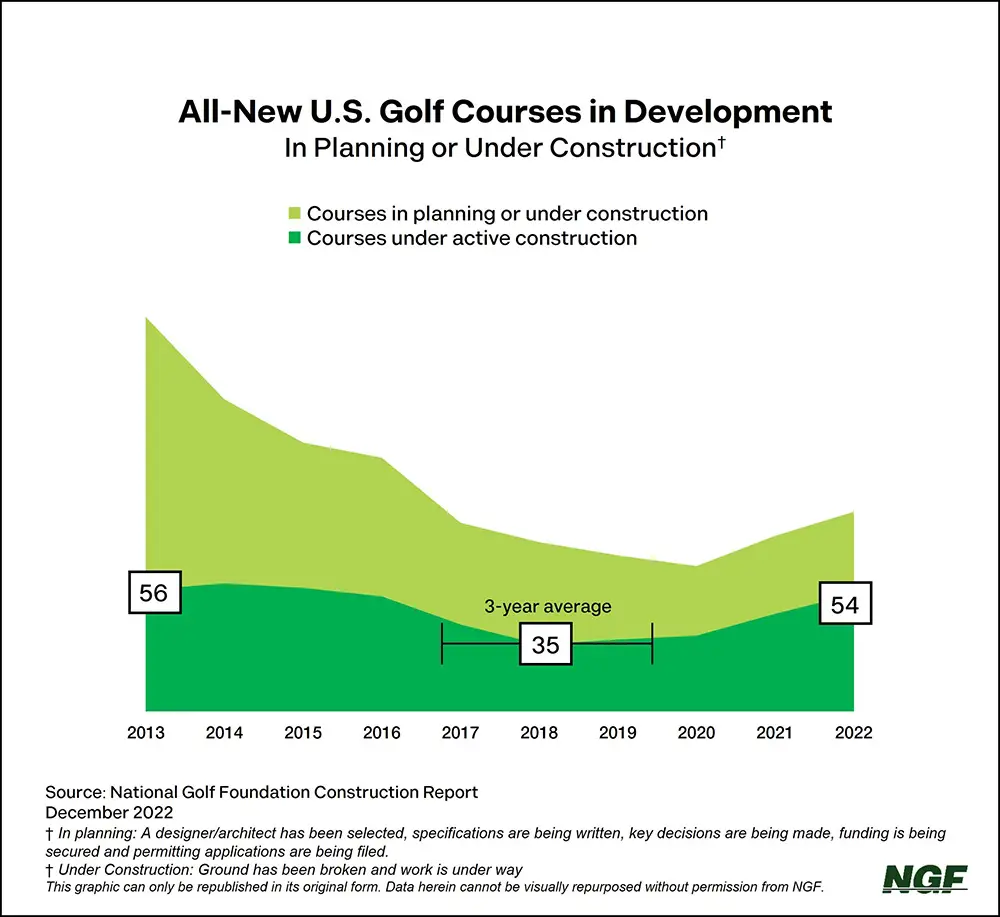The pro game we watch and read about is not what underpins the overall golf business.
Sure, the best golfers in the world boost the popularity of the game and its trappings—equipment, apparel, and so on—but recreational players are at its core. There’s a reason golf is one of the nation’s biggest participation sports and it’s because golfers like you and me—the weekend warriors, club members, muni masses, and bucket list chasers—are doing the playing and paying.
We’ve all read and heard plenty about the state of the pro game, most notably the ongoing feud between the PGA Tour and LIV at the sport’s highest level. But what about the state of the game we play? Just how healthy is recreational golf in the U.S.?
Here are four important numbers from 2022 shared by the National Golf Foundation that provide valuable context on golf’s health.
6 million people played on a golf course
The pandemic-related boost continued for golf in 2022, with a net gain of about a half-million U.S. golfers in total. Over the past three years, the increase in the total on-course golf population is about 1.3 million, whether it’s newcomers brought into the game by family, friends, or co-workers, or perhaps one-time golfers who had given up the game but decided to give it another shot. As the NGF notes though, it isn’t all Covid-related. Participation was up even before the pandemic. We’ve now seen five straight years of participation gains in pushing the golfer base to almost 26 million. For perspective, that’s almost equal to the entire population of Australia.

9 million people played forms of golf away from the course
Okay, there are plenty of people who don’t consider hitting golf balls at Topgolf or into a screen “real golf.” But this type of engagement continues to be tracked by experts because research shows that it not only creates more interest in traditional golf, but helps encourage trials in the game we all know and love. And in 2022, for the first time ever, the number of people who played alternative forms of golf surpassed that of on-course play. So, should we really be surprised that “green grass golf” is seeing record levels of beginners and interest from those who haven’t yet teed it up on a course?
500 million+ rounds played
Rounds across the U.S. were down in 2022. That could be a headline, but it most definitely doesn’t tell the whole story. For anyone who has heard or read that, it simply means that rounds this past year didn’t quite match the record-setting year we saw in 2021. That year saw more play at U.S. golf courses than any in history. Doing that again was a big ask, especially when weather early in the year wasn’t exactly golf favorable in many parts of the country. The big takeaway from last year is that we had one of the top four years ever in play, with more than 500 million rounds for the third year in a row. It’s clear evidence the demand for recreational golf remains strong.
54% rise in new course development
While we’ve touched on the limited number of new course openings in stories the past several years and that’s unquestionably still the case, the NGF shared data recently that showed an increase in the number of brand-new course designs. This includes courses that are currently under construction or in planning. This uptick versus the three-year pre-pandemic average is especially notable in states like Texas and Florida, both of which have seen an influx of people and money from other parts of the country in recent years. It’s all about meeting demand.

How much golf did you play in 2022? Tell us about your year in the comment section.






